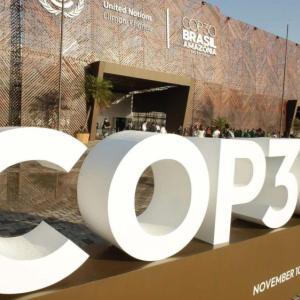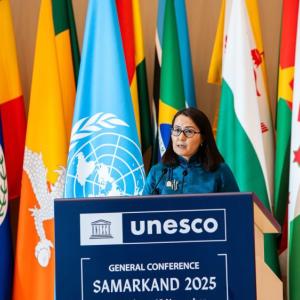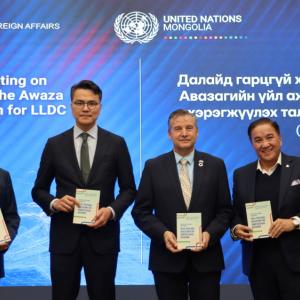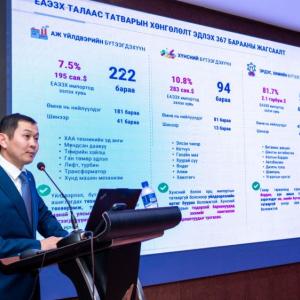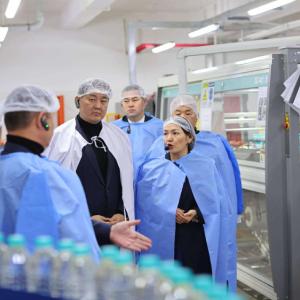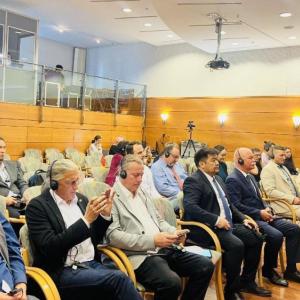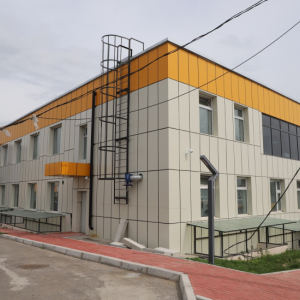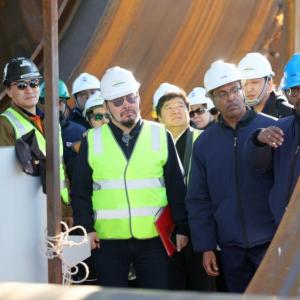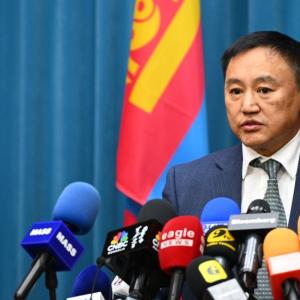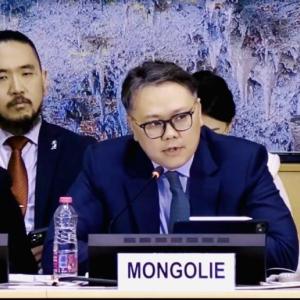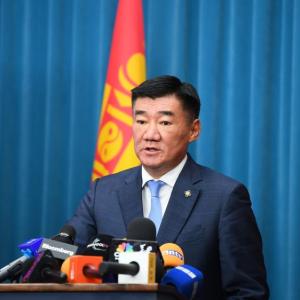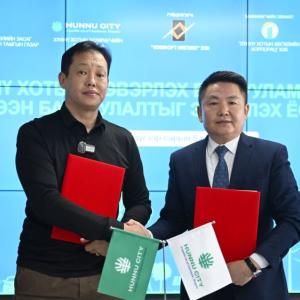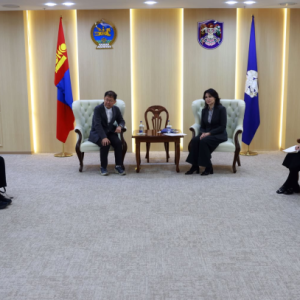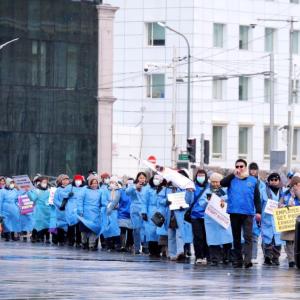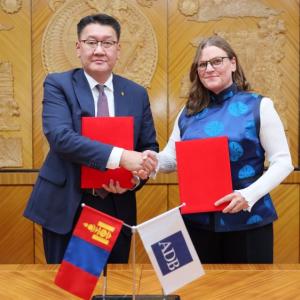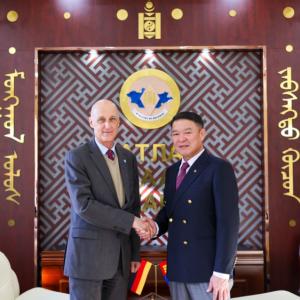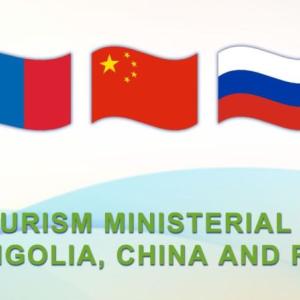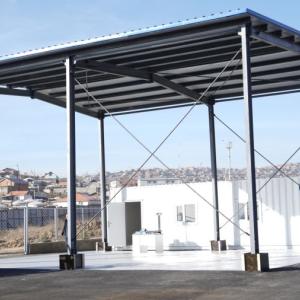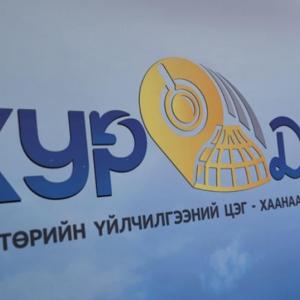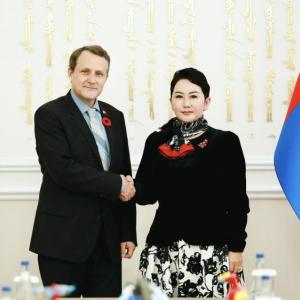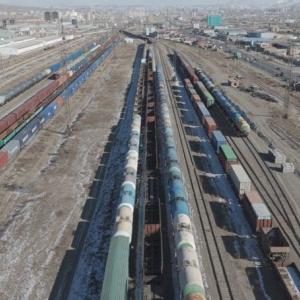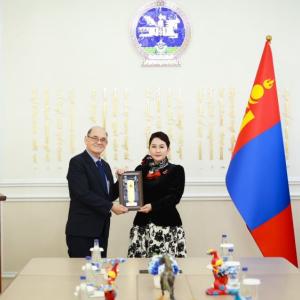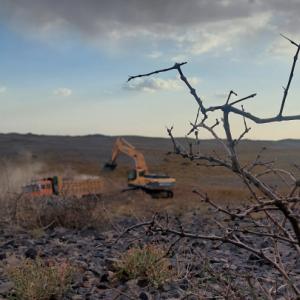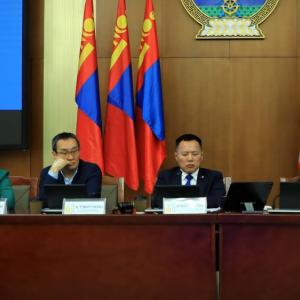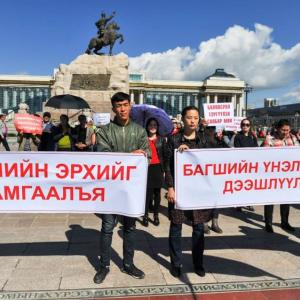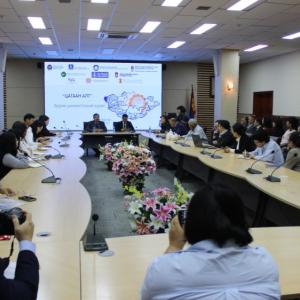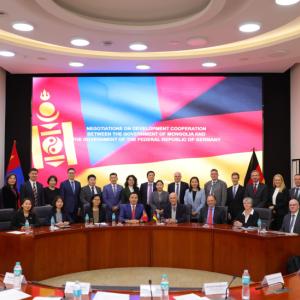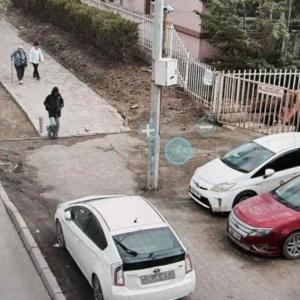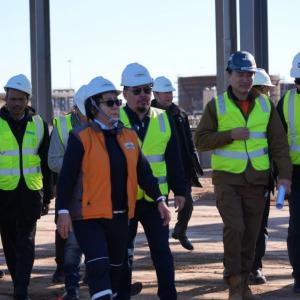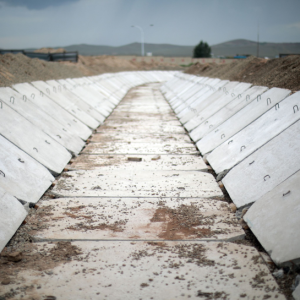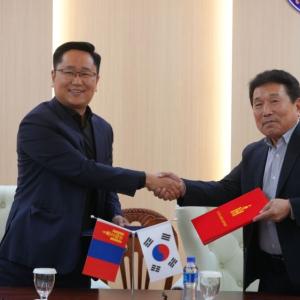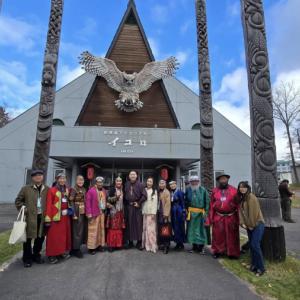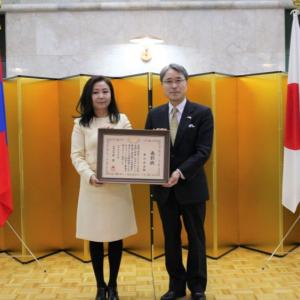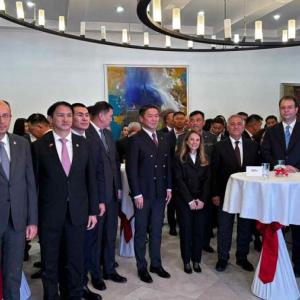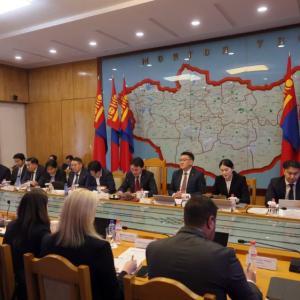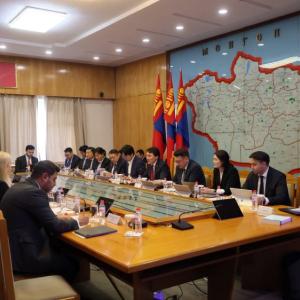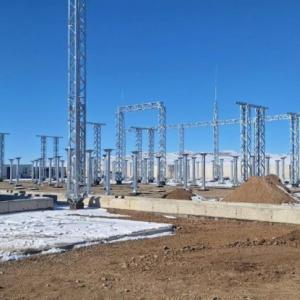Kh.Batjargal: Sustainability of development policy secured by the Constitution
The Mongol Messenger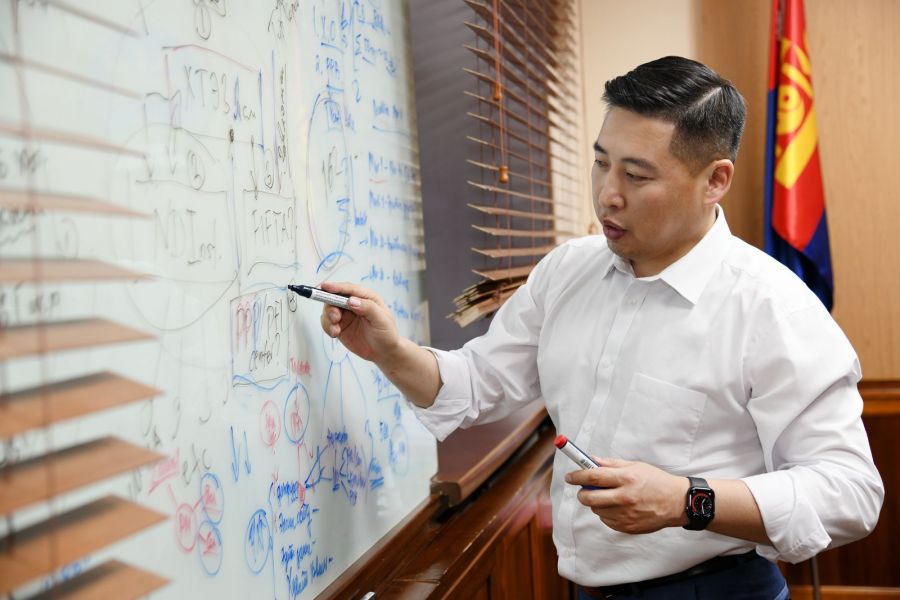
Ulaanbaatar /MONTSAME/ 30 years have passed since Mongolia transitioned from a centrally planned economy into a market economy.
There were much talks about the mistakes that were made during this time, from a political point of view —however, there has not been any conclusive discussion yet regarding fundamental economic analysis. Despite this, from the ‘Vision-2050’ long-term development policy document as well as the plans that define the development of Mongolia for the next 30 years, you will notice that the word, “economy”, is mentioned quite a bit throughout the documents. Thus, we took an interview from Chairman of the National Development Agency Kh.Batjargalabout the “blueprint” for the country’s development.
-If you consider that a country—as well as an individual is able to develop and grow based on their plans, goals, and dreams, your organization would have to be the developer of the country roadmap for development. Is this understanding correct?
-To answer your question by referring to how you defined the role as an ‘developer’ of the journey map for development, the National Development Agency is not a government institution existing only today, more specifically since Mongolia transitioned into democracy. This is due to that our organization’s history began with the establishment of the State Planning Committee per Resolution no.106 issued by the Baga Khural Presidium of the People’s Republic of Mongolia in 1945. As a result of the eight 5-year plans that were developed and implemented by the State Planning Committee in 1946-1990, our country was able to transform from a country that was mainly focused on livestock farming into an industrial country. This is a clear example of how the Mongolian economy was developed through proper planning and organization throughout the years.
-In other words, do you mean that the role to draw out the plans for Mongolia’s development has not changed despite the change in society as well as the organization’s name?
-Yes. In general, we carefully think about the distant future, considering all our opportunities and how we can fully utilize them.
- It might be a bit rude, but is there really a need to study its past history as well?
-To create an even better version, it would, of course, be impossible to define our development policy without properly looking through the history that was made by the previous generations, including the studies they conducted and the plans they developed. This is what I believe as an individual.
Moreover, it would be wrong to be casually discussing the matter without understanding its essence and “philosophy”. At the very least, we would come across all kinds of important information as well as significant results by simply going through the available information about certain issues, such as economy, infrastructure, mining, and environment that have been passed down to us, using them as the main foundation and continuing to carry out detailed studies.
There is a saying, “Without the old, there is nothing new.” I believe that this saying alone carries a tremendous amount of power and significance. Thus, as I have mentioned before, there are times where “remembering'' certain information about all kinds of sectors can become the start of a new large scale project. In this sense, it is pointless to talk about the future without looking back on studies and research as well as past works of construction. At the very least, our ancestors naming their sites as ‘Oyutolgoi’ and ‘Tavantolgoi’ is surely not a mere coincidence.
The proof of how well grounded our ancestors’ wisdom was can be clearly seen from the names alone as well as how they both serve to be economically beneficial projects.
Aside from statistical information and studies, history—and even tales that are passed down to us through generations carry information with economic significance. Thus, it is absolutely necessary to thoroughly read as well as discuss these matters.
-Then what about the past 30 years? I have noticed that it has almost become a “trend” to yell out, “Mongolia could have become much more developed,” whenever our political situation is in a difficult spot. But if you actually listen to their discussions about what went wrong, there are barely any points that bring up a conclusion that is purely based on the economy.
- Getting a total investment of USD 28.8 billion from 123 countries since 1990 is not a bad index. But during the years when development policies used to be formulated in a 4-year cycle due to parliamentary elections, there were times when a decision would be made to further develop the animal husbandry sector, and then suddenly focus on the implementation of infrastructure projects in the next four years. I believe that the development plans for the mining sector as well as its results became unsatisfactory due to this.
Upon receiving funds, giving them directly to citizens and spreading them out thin to numerous insignificant projects would definitely have to be a mistake that was made in the last 30 years.
In order to comprehensively understand the issue rather than to make a general conclusion, I have recently been reading a lot of studies and analysis conducted by independent researchers and international organizations. For instance, the five volumes of research on development policies of Mongolia as well as their correlation and stability that was carried out by the National Development Agency with the support of the UNDP.
-What is the significance of the research?
-I even took small notes from some of its sections. From this, it can be seen that although there has been positive changes in vision and the socio-economic situation in the last 30 years, the government and the long-term development policy continued to be unstable, with the institute in charge also having some instability. As a result, we came to have all kinds of long-, mid-, and short-term policies that have no correlation.
It is definitely a drawback that there is no state-owned professional institute in charge of providing integrated management and coordination in order to have correlation between long-term policies. “This made it impossible to fully utilize opportunities for development through a unified policy and phased planning, and led to many socio-economic problems”, what is written here. Perhaps now you would want to ask me how it should be carried out in the future.
-Would you please answer that exact question if you don’t mind?
-To put it simply, we lacked a national research system that could explain our unique features to both domestic and foreign sides in a transparent manner based on evidence. It has become increasingly important to formulate a policy that reflects our country’s features and unique conditions based on scientific research, and build our national capacity for implementation. In short, you could say that our organization’s duties have become increasingly important.
-To understand the concept, “National Capacity”, I assume that one would have to first understand the national development philosophy?
-Its definition merely refers to how the development goal of Mongolia has to have the citizens of Mongolia at its core. The philosophy behind national development must serve its citizens. Thus, Mongolia is faced with the necessity to enhance its development policy. Step-by-step measures are being implemented to receive the suggestions of scholars and researchers as well as involve the public in defining the policy. Although policies are formulated in order to define our goals, there is much more to be done in terms of how it is implemented.
When it comes to large-scale projects and construction work, public-private partnership or PPP is another issue that is usually brought up. There is no doubt that it is the “engine” for development alongside being a factor that accelerates the process. The government is not required to do everything that needs to be done. Even developed countries have utilized the capacity and resources of private entities to get behind large-scale projects. However, it is considered rather narrow-minded to assess partnerships through concession contracts or tenders. In other words, alongside defining our new model of development, we are also required to fully comprehend the core reason for development.
-The ‘Vision-2050’ long-term development program was formulated by a team led by Prime Minister L.Oyun-Erdene during his time as the Cabinet Secretariat, and approved by the parliament. Is the policy document considered as a new concept and a direction for development?
-Yes, in the sense that it is the measures to be implemented in the next 30 years, and the results to be achieved in 30 years time, ‘Vision-2050’ is definitely a policy document that will be followed in the future.
Personally, I believe that the most important objective that is reflected in the policy document is “to create a wealthy middle class”. Even when the economy grows by 6 times than it is currently, and GDP per capita grows by 4 times by making structural changes in the economy and developing the leading sectors in the coming 30 years, the life of Mongolian citizens should still be the main topic of discussion. In this sense, our organization will formulate citizen-centered development policies in the future.
After all, all the discussions have always revolved around a certain number of mining deposits, leaving behind the matter regarding the benefits for Mongolian citizens.
-But wouldn’t the next political party to win a majority change the development policy? As a government agency in charge of defining development policies and handling the core management, is this risk being calculated by your organization?
-Of a total of 4 long-term policy documents and over 500 development policy documents formulated in the past 30 years, about 190 are currently being implemented.
As you have said, there are some that were abandoned as a result of the majority party changing. However, the ‘Vision-2050’ long-term development policy document is unique for having the foundation to be sustainably implemented until 2050.
-Why would that be the case? Would the Democratic Party implement a development program that was authored by the Mongolian People’s Party? Although it is almost embarrassing to ask about this, there have been cases where each party implemented their measures without any worries about turning organizations “red” or “blue”.
-This is due to how an amendment was made in Section 1.7 of Article 25 in the Constitution of Mongolia, which states that, “Development policy and planning shall be stable.” In other words, it serves as the “immune system” for ‘Vision-2050’ long-term policy document to be implemented for 30 years, defining the direction of Mongolian politics and economy.
Furthermore, a system was established for the types of development policy documents through the revised Law on Development Policy, Planning, and Administration that was approved by the Mongolian parliament last May, providing correlation between policies and defining the accountability system. In connection with the legal reform, policy documents are also currently being assessed.
-What measures will be taken in regards to the about 190 policy documents that are in effect? Will they be repealed or coordinated with the others?
-In the framework of the direction given to the cabinet by the parliament, works are underway to organize the policy documents by integrating them into 7 types of mid-term development programs by receiving suggestions from corresponding ministries and organizations.
We found that each sector formulated its own policy documents.
Due to this, ministry officials tended to lose a lot of their time dealing with paperwork, working on one report to another—when in actuality, government policies are to be implemented by providing proper correlation in-between and focusing on cross-sectoral relations. And if development policies kept on being formulated separately, there would be no doubt that correlation would not exist.
Thus, in aims of eliminating policy errors and ensuring better coordination, the National Development Agency is giving special attention to the implementation of the Law on Development Policy, Planning, and Administration.
-As a bystander, I am starting to think that people that are equipped with excellent knowledge—or one might say, “universal” employees and great bosses should work at your organization. After all, figuring out the correlation for cross-sectoral policies would have to be a rather tall task, without a doubt?
-Rather than solely being well equipped, our staff is required to have great skills and good teamwork. I believe that there must always be a policy to build the capacity of human resources by creating more opportunities for our youth that are putting all their heart and soul into their work by utilizing what they have learned as well as making more job opportunities available for those that wish to make their own contributions to the country’s development. Moreover, it should be noted that the work of integrating and assessing the policies alongside its coordination is not only limited to our employees, but also by reflecting the opinions of scholars and researchers as well as the public, introducing the result to the Government.
-During the discussion of the Revised Bill on Development Policy, Planning, and Administration, I recall a discussion that took place on the roles of the Ministry of Finance and the National Development Agency that was similar to the chicken-or-the-egg scenario. Could you elaborate more about this matter?
-As it would become a bit too philosophical if I fully delve into the matter, I apologize for not giving a proper answer. However, there has indeed been a change in the roles of the Ministry of Finance and the National Development Agency in developing the bill for the State Budget as well as the process for its approval. As a result, in the framework of the rights and obligations given by law, our employees are currently intently working on the national development plan for 2022. To put it simply, the bill was approved with the concept that the development program is required to be stable and have proper planning.
As accordingly, the planning document is divided into three types: short, medium, and long. The annual state budget bill would be considered as a short-term planning document. More specifically, the Law on Development Policy, Planning, and Administration states that:
- “Short-term or planning documents to be implemented in the course of one year shall include the yearly national development plan, the state budget, the yearly development plans for aimags, the capital city, and cities, and local budgets,” in Article 6.9,
- and all the requirements for yearly planning documents in Article 6.10.
In other words, the budget must be developed in accordance with the development policy.
-What are those requirements?
-There are definite requirements including being consistent with national five-year development goals and incorporated in action programs of the government and governors and having a reliable funding source, accountability system, approved feasibility study and design plan, and an annual budget.
-NDA would not do the planning if those requirements are not met. Is that correct?
-If we receive a proposal to construct a building in a soum, for example, we would evaluate its necessity, relevance, economic benefits, and environmental and social impacts and the local population and infrastructure capacity through specific methods before deciding on the planning. Afterwards, we would submit our plan to the Cabinet, which would be further discussed by the parliament.
The budgeting comes after that. Simply put, the Ministry of Finance is responsible for submitting the budget to the Cabinet and then having it approved by the parliament.
-In short, it appears there was no need to avoid the chicken-and-egg topic. Your agency is the first when it comes to budgeting, is not it?
-There is one thing to note. The budget is policy-based. We do not simply make the decision on our own after some evaluation and discussion.
In other words, after workshops and presentation events are held among citizens, ministries, agencies, policy-makers, and local authorities, a research-based proposal is developed in light of the recommendations. Such procedure is followed not only in Mongolia. This practice is common in other countries.
Budget gap can be avoided if a country has unified policy, related vision, and appropriately guided planning. It could also ensure effective budget expenditure and shed light on public expectations.
-Does your agency have sufficient staff to cope with such heavy workload?
-We can be likened to an overloaded truck in terms of how much workload and how many staff we have, meaning there is a deficiency. We remain an agency even though our duties and areas of responsibilities are set at the level of a ministry as reflected in law.
-But Prime Minister L.Oyun-Erdene remarked the need to establish a ministry for economic development and planning from this spring when he announced the Cabinet members at the parliamentary podium, right?
-Preparations for that are underway. A parliamentary resolution has also been passed and tasks have been assigned.
-We had an equivalent ministry before. Unfortunately, it eventually ended up in court. Given that, is there any use for taking the risk of creating another one?
-In my view, having the economic development ministry and the industry ministry both was great decision, in respect of public institutions. They did start excellent policy reforms and planning in that sense, but regrettably failed to be stable, and there were also shortcomings in their legal framework.
Moreover, it was not the best thing to do for the administrative body to jump right into economic affairs when the ministry should have been making just policy. In other words, they were the ones making policy and carrying out projects, which would increase the possibility of making error in the process.
In short, if a ministry for economic development and planning is created, it should not interfere in the management of funds.
We have learned from past experiences that over-centralization itself tends to result in principles that could devalue, waver, and disrupt the government’s goals and vision otherwise.
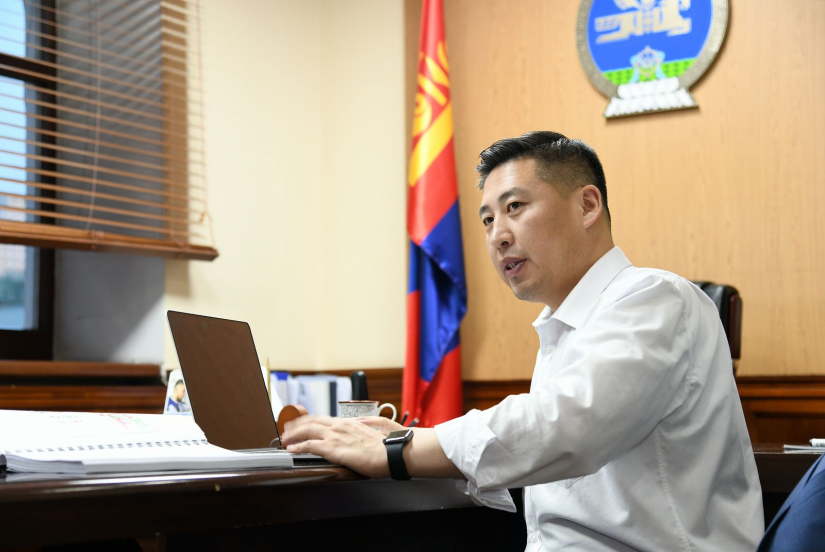 -People believe your organization is a public institution responsible for informing investors of practical projects and programs and promoting them in terms of their economic benefits. Notwithstanding whether NDA becomes a ministry or remains an agency, are there any projects ready for presentation to investors? Although ‘Vision-2050’ has major goals in specific areas, the projects ready to be implemented seemed to have been indicated in general terms. I am asking this for clarification as the topic is related to your agency.
-People believe your organization is a public institution responsible for informing investors of practical projects and programs and promoting them in terms of their economic benefits. Notwithstanding whether NDA becomes a ministry or remains an agency, are there any projects ready for presentation to investors? Although ‘Vision-2050’ has major goals in specific areas, the projects ready to be implemented seemed to have been indicated in general terms. I am asking this for clarification as the topic is related to your agency.
-The Parliament has approved the Investment Program for 2021-2025 developed by our agency.
As you said, it generally sets out the economic priority sectors, involving in it value-added mining, strategic megaprojects, processing industry, agriculture, energy, transport, logistics, diversified tourism products and services, small and medium scale industries, and knowledge-based creative production as key economic sectors.
There are goals to establish hi-tech heavy industrial facilities such as Tavantolgoi power station, Tavantolgoi coal deposits, Oyutolgoi underground mine, copper concentrate processing plant, oil refinery, metallurgical plant, gold refining plant, and power stations.
Information technology cluster development and supporting its international expansion is also incorporated alongside many others. When it comes to implementation, however, there are issues to address.
-Could you tell me what those issues are in particular?
-Generally speaking, in implementing the projects, there has been inadequacy of complete feasibility studies that could attract investment.
Needless to say, they would meet the national standards. However, when we present it on the international stage for investment and talk to development finance institutions and investors, none of the feasibility studies meet their requirements. Given the state budget current state, we do not have enough capacity to carry out feasibility studies of all major projects at a level that meets the requirements of international investors with funding from the budget.
Therefore, first of all we should shift to an approach of raising funds and investment through a project development mechanism and institutions. There are international good practices and experiences. If the government, private sector, and international organizations jointly implement projects through that mechanism and carry out the feasibility studies, it would be greatly beneficial in terms of both time and money. However, it is only one alternative. As can be seen from international experiences, especially when the budget is facing challenges, projects could be successfully implemented through the various types of public private partnerships that would not burden the budget.
-What you suggest is to propose all of the projects abroad in that way, as much as possible?
-The idea is to attract investment from foreign sources through public private partnerships. But another thing that should be done beforehand is to classify which projects would produce greater economic benefits if implemented first and which projects have to be implemented together in harmony. Our agency has already started this work from early on and will complete classifying major projects, which Mongolia could implement, by their infrastructure, economic, and social benefits, in the near future.
-So the agency is determining the strategic order in which the projects will be put into effect?
- It is not only the order. It could be explained as the process of prioritizing and aligning the projects and determining their funding sources and ways to implement them. Classifying is one thing, but determining how to implement them is the most important. We will soon present it to the Cabinet.
-Lately, the change of development trends has been a popular topic globally. On the other hand, we have been talking about and adopting the old approaches. We are still building railroads, while our southern neighbor is reforming its transport service with the addition of a train faster than the speed of sound. Comparing all that is upsetting sometimes, right?
-I agree on the importance of keeping up with technological advances and applying them into our activities and industries. But there are sectors that skip some stages of development and develop rapidly and sectors that must go through specific development stages. Mining, for example, has numerous factors affecting it. The same goes for agriculture. It is a different matter when it comes to the development of creative production, cultural exports, and information technology, the sectors we have started from the same ‘base line’ with the world. One thing is certain, which is that Mongolia is continuously developing. A comparison can be made with how we were a few years ago.
Besides, the fourth industrial revolution itself is requiring all countries to advance in areas of artificial intelligence, fin-tech, and cloud technology. The government of Mongolia has stated that it is committed to providing substantial support in that effort. So the development trends have already started changing. The government’s goal for implementation, prioritization, and planning of the large number of projects will be based on scientific, technological, and innovative development.
The development of the world has made it impossible to grow without science and technology. If Mongolia is left out of this trend, it will remain where it was and do nothing but wave in the direction of the other countries’ paths to development. That should not be the case. For the most part, it would be appropriate for the country to estimate its capacity and adopt a strategy of putting efforts in primary development sectors first rather than trying to bring all sectors to world-class standards.
-By that, are you referring to the goal of growing together? Mongolia has regional development commitments. It seems the subject was brought up in your previous answer.
-You asked about the philosophy of national development at the start of the interview. Then I would like to end the interview on a note about national ambitions since we have gotten onto this subject even though we did notintend.
Mongolia’s regional development commitments should not be limited by its being entirely surrounded by land between China and Russia, but viewed in relation to the country’s position at a focal point covering a larger scope. We have to comprehensively develop transport and logistics. In my view, a free economic and a business hub to be created based on the international airport in Khushig Valley is certainly one of the major short-term goals and an opportunity to show the national ambitions to the world.
If we leverage the opportunity for an air link between Asia and Europe that comes with our position, the country’s development ambitions could be highly recognized not only in the region, but also in the world.
Mongolia is also committed to creating a major financial hub in Asia. In the future, we could even gain energy independence and become a key regional actor. With that, every Mongolian will have a job with a globally competitive salary and live contentedly and peacefully. Lastly, NDA is doing planning and working on planning-oriented development policy day-to-day.
-Is this how you would like to end the interview?
-This is currently all I have to say. I have successfully seized the opportunity presented by the interview. Thank you.
G.Otgonjargal
 Ulaanbaatar
Ulaanbaatar






